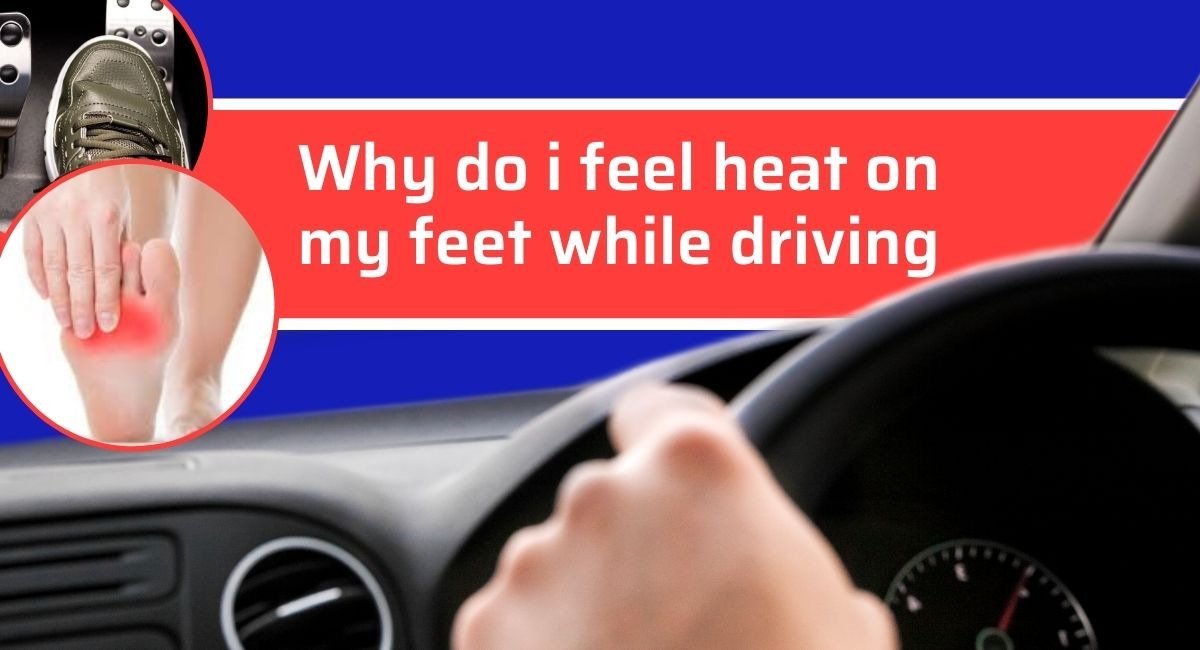As you settle into the driver’s seat, ready to embark on a journey, you suddenly feel an unexpected warmth creeping up from beneath—the unsettling sensation of heat on your feet while driving.
It’s a peculiar experience that leaves you questioning the source and wondering why it happens. Is it merely a quirk of your vehicle, or is there a more profound explanation behind this phenomenon? Understanding the cause behind feeling the heat on your feet while driving is essential for your comfort and safety.
This comprehensive article will explore the various factors contributing to feeling the heat on your feet while driving. We will delve into the inner workings of your vehicle’s heating system, discuss potential causes such as faulty components or improper settings, and provide practical tips to help resolve this issue.
So, if you’re tired of suffering from hot feet during your drives, keep reading to understand why it happens and discover practical solutions.
Understanding the Heat Source
It’s essential to recognize the connection between engine heat and the heat inside the car to comprehend why you feel the warmth on your feet while driving. The engine generates a significant amount of heat as it operates. This heat is transferred from the engine compartment to the cabin through various pathways, such as the exhaust system, engine bay, and cooling system.
Heat Distribution in the Car
While the engine heat radiates throughout the cabin, you may notice that it tends to concentrate near the driver’s side floor. This phenomenon can be due to several factors.
The proximity of the engine to the driver’s side floor makes it more susceptible to heat transfer. Additionally, the design of the heating system, which is near the driver’s side, can contribute to the concentration of heat.
Insulation and Heat Shields
Insulation is vital in reducing heat transfer from the engine compartment to the cabin. It acts as a barrier, preventing the heat from permeating the car’s interior. Manufacturers incorporate insulation materials in various areas, including the firewall, floorboards, and engine bay, to minimize heat transmission.
In addition to insulation, heat shields play a crucial role in redirecting engine heat away from the driver’s side floor. These shields are made of aluminum and strategically placed to reflect the heat toward the engine or dissipate it in a different direction.

Common Causes and Solutions
Several common causes can lead to excessive heat transfer and result in the discomfort of feeling the heat on your feet while driving. A faulty or worn-out insulation system is a common culprit for excessive heat transfer and results in the discomfort of feeling the heat on your feet while driving. Over time, the insulation materials may degrade, allowing more heat to enter the cabin. Replacing or reinforcing the insulation can reduce heat transfer.
Another common cause is damaged or missing heat shields. If the heat shields are compromised, they cannot effectively redirect the heat away from the driver’s side floor. Inspecting and replacing the heat shields when necessary can help alleviate the issue.
Maintaining a Proper Cooling System
Ensuring that your car’s cooling system is in good working condition is crucial for managing heat distribution within the vehicle. A malfunctioning cooling system can lead to overheating, causing excessive heat to enter the cabin. Regular maintenance, checking coolant levels, inspecting hoses and belts, and flushing the cooling system, can help prevent cooling system-related issues.
Other Factors to Consider
While engine heat is the primary source of the heat felt on your feet while driving, there are other factors to consider. Weather conditions play a significant role, as hot climates can exacerbate the sensation of heat inside the car. Additionally, the make and model of your vehicle may influence the extent of heat transfer and concentration near the driver’s side floor.
To manage heat discomfort, consider employing various strategies depending on the circumstances.
Park Strategically
Whenever possible, park your vehicle in shaded areas to reduce heat buildup. If shade is unavailable, use windshield sunshades or window tinting to block the sun’s rays and prevent excessive heat from entering the cabin.
Utilize Ventilated Seats
If your vehicle has ventilated seats, activate this feature. Ventilated seats use fans or airflow to circulate air through the seat, reducing heat buildup and keeping you cool.
Adjust Air Conditioning Settings
Ensure your vehicle’s air conditioning system is functioning correctly. Adjust the air conditioning settings to direct cool air toward your feet. Experiment with different temperature and fan speed settings to find the most comfortable combination.
Wear Breathable Footwear
Opt for lightweight and breathable footwear while driving. Avoid shoes with thick soles or excessive insulation, as they can trap heat and contribute to discomfort. Choose footwear that allows air circulation and helps keep your feet cool.
Stay Hydrated
Proper hydration can help regulate your body temperature. Drink plenty of water before and during your journey to stay hydrated and promote overall comfort.
Use Floor Mats or Insulating Covers
Consider using floor mats or insulating covers specifically designed to reduce heat transfer from the engine compartment to the cabin. These products provide an additional layer of insulation and can help keep your feet cool.
Important Read: How to Make Your Mazda 3 Faster: Boost the Performance
Another factor could be the design of your vehicle’s exhaust system. In some cars, the location of the exhaust pipes and components under the vehicle can transfer heat to the floorboard and ultimately reach your feet.
Furthermore, improper insulation or gaps in the firewall or floor of the vehicle can allow heat from the engine or exhaust to penetrate the cabin, causing your feet to feel hot. This issue is more common in older vehicles or those with worn-out insulation.
Additionally, issues with the exhaust manifold or the catalytic converter can cause excessive heat buildup on the car’s floor. It is advisable to have these components checked and serviced regularly to ensure they function correctly.
Conclusion
Feeling the heat on your feet while driving can be an uncomfortable experience. By understanding the factors behind this phenomenon, you can take appropriate measures to mitigate it. From inspecting insulation and heat shields to maintaining a well-functioning cooling system, several solutions address excessive.
